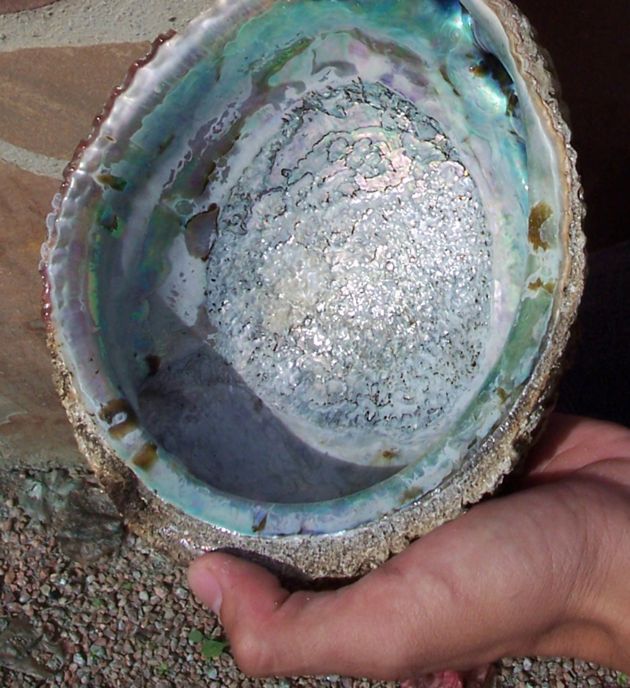Abalone Armor: Toughest Stuff Theoretically Possible

Centuries of warfare have seen body armor develop from cow hides to Kevlar. Now scientists are using lab experiments and mathematics to discover a stronger bullet-proof solution in the beautiful, helmet homes that seaweed-eating abalones make for themselves.
Abalones create a highly ordered brick-like tiled structure for their shells that is the toughest arrangement of tiles theoretically possible, says Marc A. Meyers of the University of California, San Diego (UCSD). The tiles are comprised of calcium carbonate, or chalk, sandwiches coated top and bottom with a thin protein.
"The laminate structure of abalone shell has stimulated our group to develop a new synthetic material using this lowly mollusk as a guide," Meyers said.
Abalone shell cannot stop an AK47 bullet, but careful examination of the steps taken by abalone to make their shells may help Meyers and other materials scientists develop lightweight and effective body armor for soldiers, police, spies and others.
In the past 20 years, engineers and scientists have turned more and more to nature for design inspiration. The field is called biomimetics.
The idea is that nature has evolved designs for maximum achievement with minimum effort. One example is the leak-proof packaging provided by an apple and its skin.
Biomimetics is nothing new. The Wright Brothers drew their aviation plans from the wings of birds. More recently, the development of Velcro came from a man's observation of the efficiency of burrs in sticking to a dog's fur.
Sign up for the Live Science daily newsletter now
Get the world’s most fascinating discoveries delivered straight to your inbox.
In the area of tough stuff, biomimetics scientists also recently have studied bird bills, deer antlers and animal tendons.
"We have turned to nature because millions of years of evolution and natural selection have given rise in many animals to some very sturdy materials with surprising mechanical properties," Meyers said.
In experiments with abalone shells, Meyers and his graduate student Albert Lin discovered that they are made of irregular stacks of chalk tiles one-one hundredth the thickness of human hair (a total of 0.5 micrometers). The bending of light through these stacks produces the luster of mother of pearl.
In terms of strength, a positive charge on the protein coating binds to a negative charge on the top and bottom surfaces of the hexagonally-shaped chalk tiles. This "glue" is strong enough to hold layers of tiles firmly together, but weak enough to permit the layers to slide apart, absorbing the energy of a heavy blow in the process.
"The adhesive properties of the protein glue, together with the size and shape of the calcium carbonate tiles, explain how the shell interior gives a little without breaking," Meyers said. "On the contrary, when a conventional laminate breaks, the whole structure is weakened."
Lin and Meyers measured the growth of abalone shells grown in a laboratory aquarium at UCSD's Scripps Institution of Oceanography. They pushed back a section of the body wall lining the individual abalone shells, glued 15-millimeter glass slides to them, and later withdrew slides at various time intervals to examine the growth of "flat pearl" under a microscope.
They found that the abalone's soft body wall, or mantle, near the shell initiates chalk precipitation every 10 micrometers, at which points the extremely thin tiles start to form and slowly expand outward into the shape of hexagons, eventually abutting neighbor tiles. Photographed from above by a microscope, the shell surfaces resemble a fir-tree because abalones add layers of tile faster than each layer is filled in.
The team's goal is to generate a mathematical description of shell growth that can be used by industry to construct body armor based on the abalone's ingenious design.
Robin Lloyd was a senior editor at Space.com and Live Science from 2007 to 2009. She holds a B.A. degree in sociology from Smith College and a Ph.D. and M.A. degree in sociology from the University of California at Santa Barbara. She is currently a freelance science writer based in New York City and a contributing editor at Scientific American, as well as an adjunct professor at New York University's Science, Health and Environmental Reporting Program.










